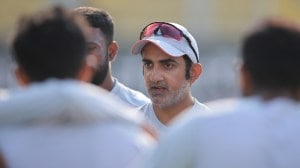Stay updated with the latest - Click here to follow us on Instagram
Craft As Culture
This is at the ongoing annual conference of International Foundation of Fashion Technology Institutes held in association with the Pearl Academy of Fashion.
I am writing from Jaipur. This is at the ongoing annual conference of International Foundation of Fashion Technology Institutes held in association with the Pearl Academy of Fashion.
Among some of the most interesting panel discussions was one titled ‘Craft,Culture and Curriculum’ moderated by Robert Ott of Ryerson University of Toronto. It had representations from academicians who have come from the Canada,UK,Amsterdam and other nations. They spoke about the importance of collaborating with craftspeople in fashion education.

“Craft,” said Leslie Holden who teaches in Amsterdam “is not just about materials and techniques but about a personal engagement with it- it teaches patience,skill,discipline,bring a student’s attention to detail and quality.”
Paul McNicoll of London College of Fashion talked about the experience of his students while working with craftspersons from Uzbekistan. These professors told the audience about the value of eye-hand coordination that students learn from craftsmen and that learning a craft is more about a mind-set than just developing a skill. I found this philosophic,wholesome approach to education very important in our times.
All panelists argued that authenticity of process and purpose which is derived from craft feeds into the sustainability discourse of fashion and helps shape the designers of the future. It is a vital debate,particularly when you bring it back to the Indian context: this country is full of craft clusters in villages and we have more skilled craftsmen than any other country in the world. Gandhiji had in fact argued for spinning khadi at the charkha as a meditative and reflective process.
However,there is a distinct difference between the Western world’s collaboration with craftsmen and ours. A Western craftsman ( a person who makes the Hermes Birkin bag,a shoemaker for Chanel an embroiderer among Dior ateliers) is not a disempowered person necessarily. On the other hand,an Indian weaver or craftsman is a behind times in education and literacy,in quality of life,in earnings and certainly is underprivileged when it comes to design education. So collaborations for fashion education in India become learning lessons (and routes to financial and social progress) for craftsmen and their families,unlike the West.

Here,because of the reciprocative impetus from design and fashion institutes through students,craftspeople not only learn how and why to make laptop bags,spectacle cases,stoles (all non-traditional products) from their craft but learn many design interventions. They find out about new patterns which can be implemented in old weaves,they learn how to take care of white fabrics inside their usually muddy homes without cupboards or storage spaces,they aspire to send their children to school and should a craft project (like Fabindia’s where a part of the profit goes back to the weaver or craftsperson) become beneficial,they can actually afford to give education to their children.
Rahul Mishra,one India’s most promising and relevant young designers told me how he makes sure some of his craftsmen can get to travel by air,even buy a laptop. He doesn’t hound them for plagiarising the designs through the interventions he brings about in the Chanderi and Maheshwari weaving techniques. “Once I have moved on to another collection,I don’t mind if they copy my designs to sell better and more,” said Rahul.

What does the Western craftsman take back in return from a collaborative project with students? There were few answers from the panelists. Though they all agreed that such work leads to new opportunities and philosophies for both ends.
What’s significant is that the Pearl Academy organised these discussions with a craft mela in the background. Numerous arts and crafts of Rajasthan were on display,with students of fashion at some stalls to explain the history and context of a craft to visitors from other countries. At many places,there were craftsmen at work showing what handcrafted in India really means.







